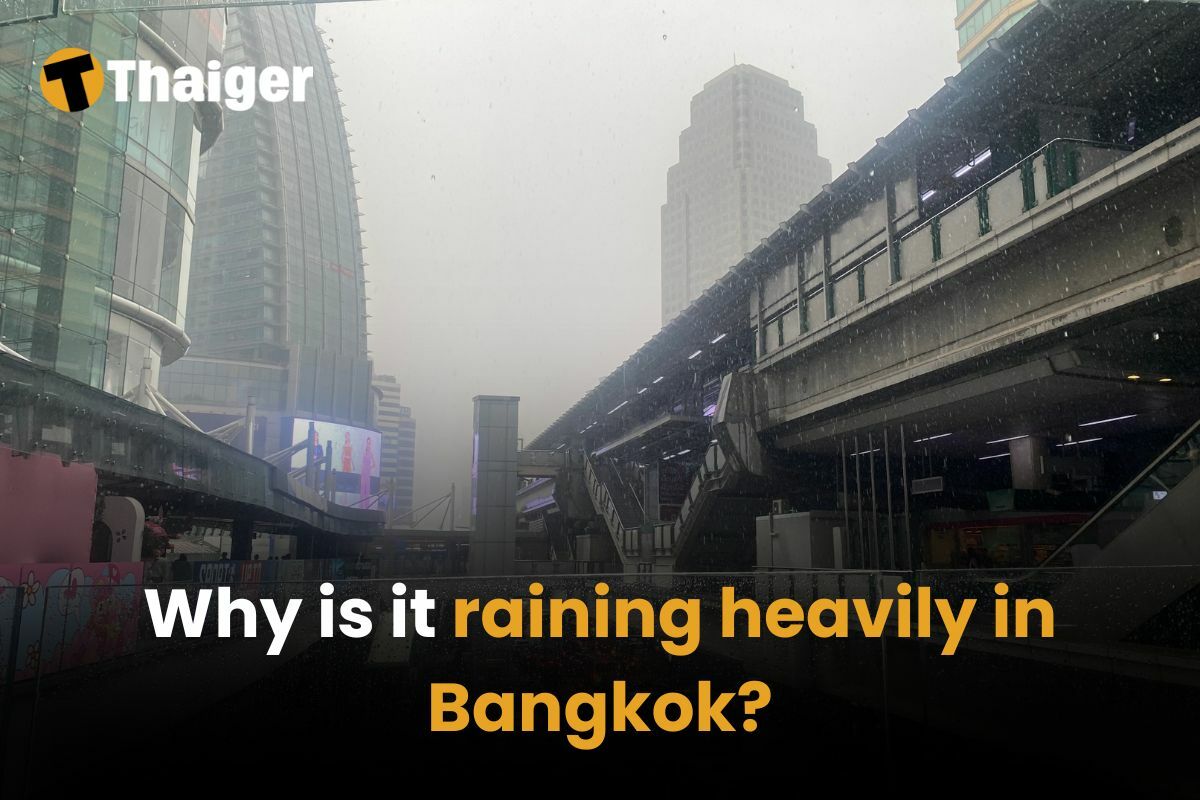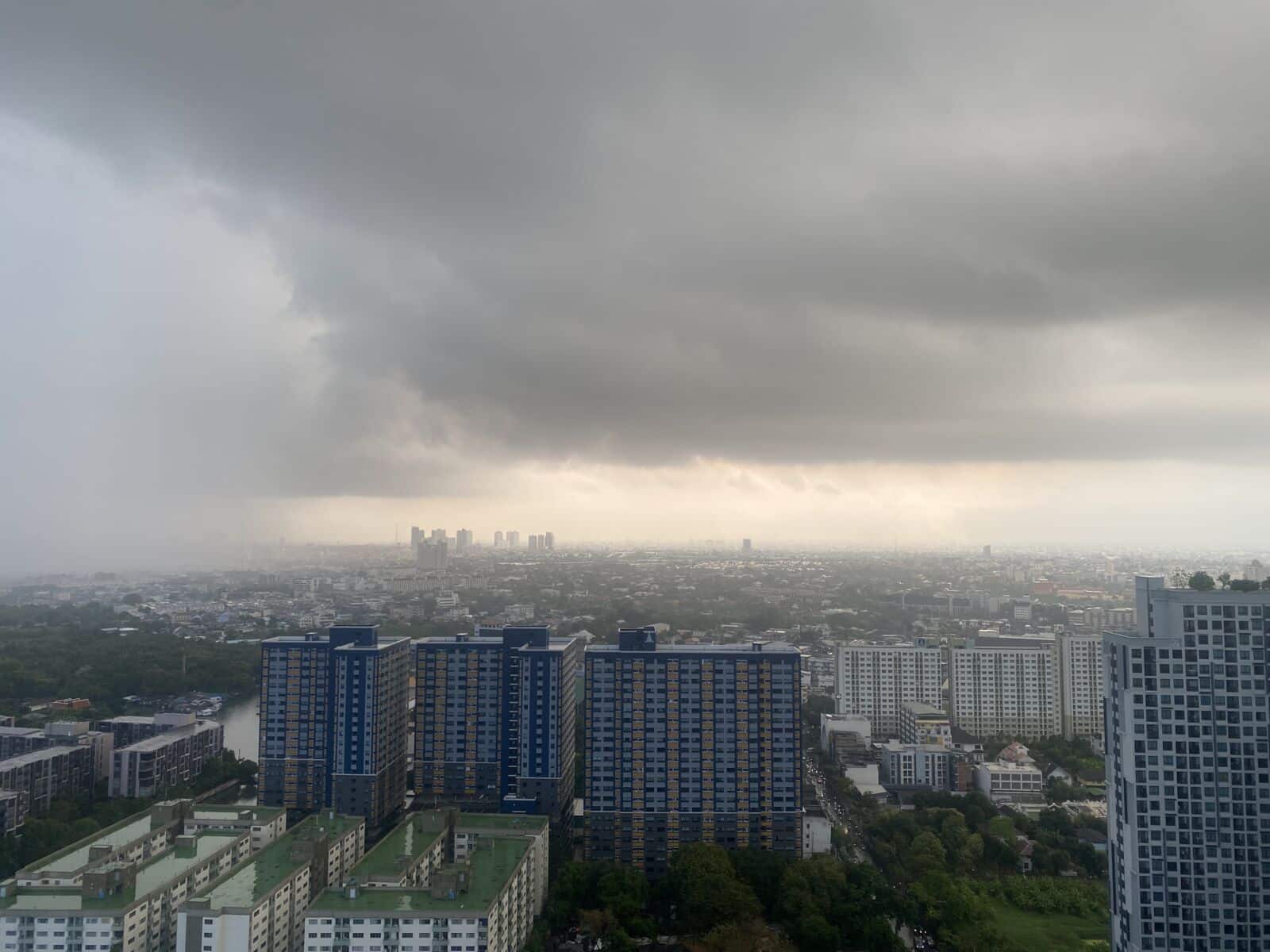Why is it raining heavily in Bangkok?

Bangkok and many parts of Thailand are currently experiencing heavy rain, which is expected to persist throughout the week. The Thai Meteorological Department (TMD) has issued warnings for severe thunderstorms, strong winds, and heavy downpours across 33 provinces. But what’s causing this unusual weather, and how does it relate to Thailand’s monsoon patterns?
What’s causing the heavy rain in Bangkok?
According to TMD, the recent storms are a result of a moderate high-pressure system from China, which has extended into northeastern Thailand and the South China Sea. This cold air mass collides with the warm, humid air already present over Thailand, triggering thunderstorms, heavy rain, and strong winds in many areas.
Additionally, the northeast monsoon has intensified over the Gulf of Thailand and the southern region, leading to even more rainfall in the southern provinces. The current weather disturbances are expected to last from February 17 to February 22 this year.
For Bangkok, residents can expect cool mornings, hot afternoons, and a 40% chance of thunderstorms with strong winds throughout the week.
Understanding Thailand’s monsoon seasons

Thailand experiences two main monsoon seasons, which heavily influence the country’s rainfall patterns:
1. Southwest monsoon (May to October) – The rainy season
The primary rainy season in Thailand typically begins in mid-May and extends through October, driven by the southwest monsoon. During this period, warm, moist air from the Indian Ocean brings frequent heavy rains, high humidity, and occasional flooding.
The peak rainfall months are usually August and September. It’s important to note that the onset and conclusion of the rainy season can vary slightly depending on the region. For instance, the west-facing beaches often experience strong southwesterly winds during this season, making them less suitable for swimming. Some smaller islands and diving spots may also close due to rough sea conditions.
Read our guide for a better understanding of the wet season in Thailand.
2. Northeast monsoon (November to February) – Cool and dry season
From November to February, the northeast monsoon brings cool, dry air from China, leading to lower temperatures and significantly less rainfall in most of Thailand. However, southern Thailand, particularly along the Gulf of Thailand, experienced increased rainfall during this period.
3. Pre-monsoon and post-monsoon storms (March to April & October to November)
In the transition between monsoon seasons, Thailand can experience short but intense storms, caused by the collision of cold air from China and warm tropical air.
This is what is currently happening, leading to unseasonal thunderstorms in Bangkok and other provinces.
Which areas in Thailand are affected?
According to the Thai Meteorological Department, the provinces most affected by the heavy rainfall and thunderstorms include:
- Bangkok and surrounding provinces
- Northeastern Thailand – Khon Kaen, Ubon Ratchathani, Nakhon Ratchasima
- Central Thailand – Ayutthaya, Chonburi, Nakhon Pathom
- Southern Thailand – Surat Thani, Songkhla, Nakhon Si Thammarat
For a complete list of affected provinces and real-time updates, check the official TMD website.
Latest Thailand News
Follow The Thaiger on Google News:


























